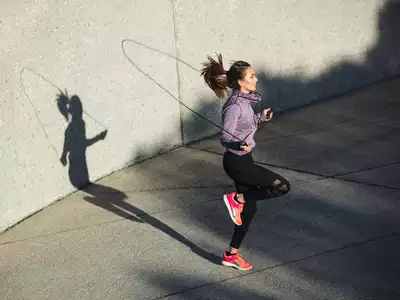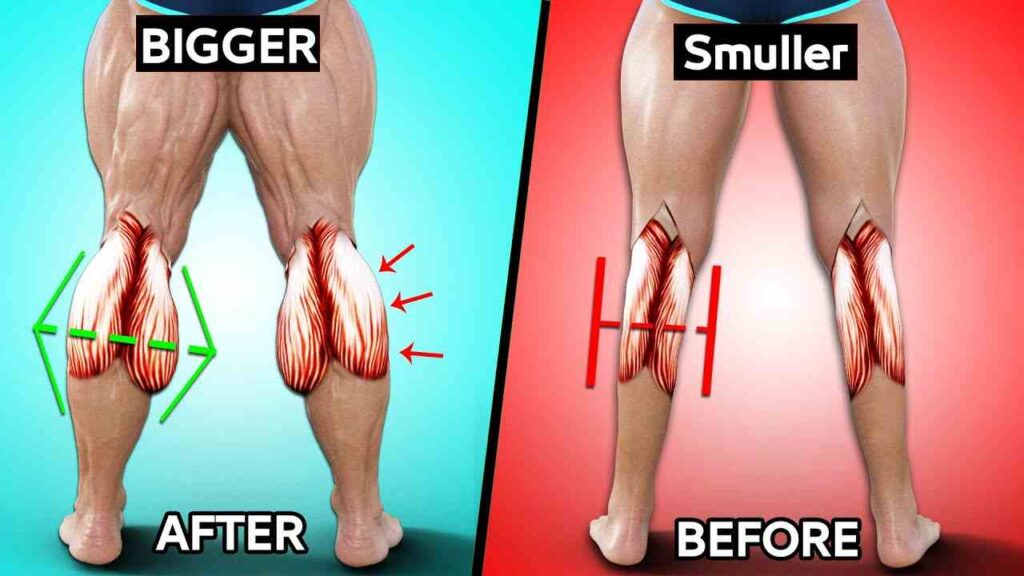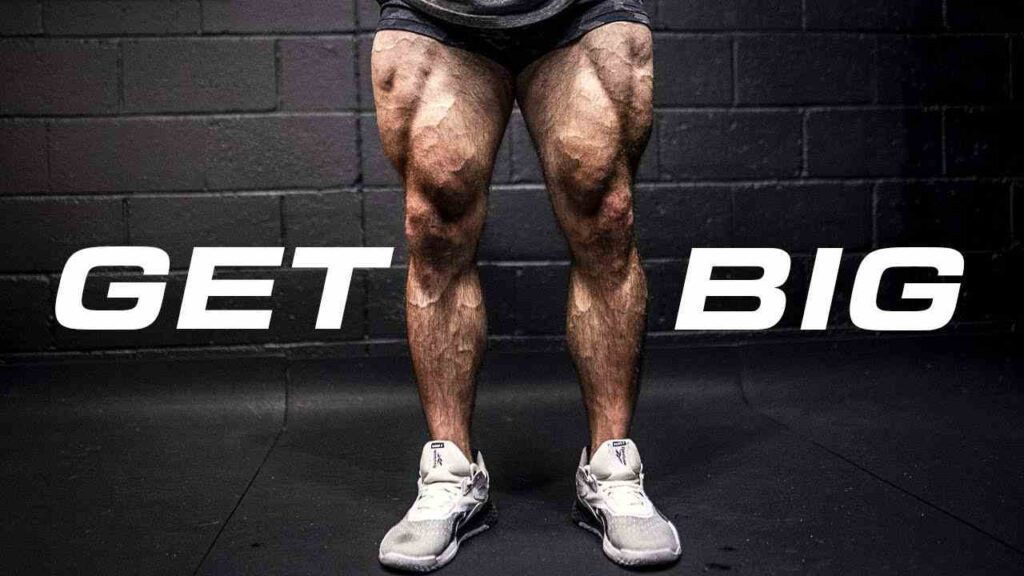Welcome to the world of jumping rope! This simple yet effective form of exercise has been around for centuries, dating back to ancient civilizations. Despite its humble origins, jumping rope has stood the test of time and is now recognized as a versatile and comprehensive workout.

Jumping rope, or skipping as it’s also known, is more than just a playground pastime. It’s a full-body workout that engages multiple muscle groups, including the heart! Yes, jumping rope is an excellent cardiovascular exercise that can help improve heart health, increase stamina, and burn calories.
But the benefits don’t stop there. Jumping rope also enhances coordination, agility, speed, power, and balance. It’s a high-intensity workout that can be tailored to fit any fitness level, making it accessible to everyone.
One of the greatest advantages of jumping rope is its simplicity. All you need is a rope and a little bit of space, and you’re good to go. You can jump rope indoors or outdoors, making it a convenient option for those with busy schedules.
SHOP FOR THE JUMPING ROPE ON AMAZON
Moreover, jumping rope is never boring. There are countless techniques and styles to try, from basic jumps to complex tricks and sequences. This keeps the workout engaging and challenging, pushing you to constantly improve.
In this article, we will delve deeper into the world of jumping rope, with a special focus on one question: Does skipping rope build calves? So, let’s jump right in!
Muscles Worked by Jumping Rope
Jumping rope is a full-body workout that engages several muscle groups simultaneously. Here are the primary muscles that are worked during a jump rope workout:
- Calves (Gastrocnemius and Soleus): These are the primary muscles used in jumping rope. Each jump requires a push from the calves, making them one of the most engaged muscles during this exercise.
- Quadriceps: These muscles located in the front of your thighs help lift your legs off the ground during each jump.
- Hamstrings: Located at the back of your thighs, these muscles work in conjunction with your quadriceps to aid in the jumping and landing phase.
- Glutes: Your glutes, or buttock muscles, are used for stability and power during each jump.
- Core (Abdominal and Lower Back Muscles): Jumping rope requires a tight core for balance and stability. The constant engagement of the core muscles helps strengthen your abs and lower back.
- Shoulders (Deltoids): Your shoulders are involved in turning the rope. This constant movement helps tone and strengthen the deltoid muscles.
- Forearms and Wrists: These muscles are constantly engaged to swing the rope, providing a great workout for these often overlooked muscles.
How Jumping Rope Builds Calves
Jumping rope is a highly effective exercise for building calf muscles due to the following reasons:
- Repeated Engagement: Each jump in a jump rope workout requires a push from the calf muscles. This repeated engagement leads to muscle fatigue, which is a key factor in muscle growth.
- High Repetition: Jumping rope involves a high number of repetitions in a short amount of time. This high-repetition, low-weight exercise is ideal for endurance training and muscle toning, including the calves.
- Explosive Movement: The explosive movement required for each jump activates the fast-twitch muscle fibers in the calves. These fibers are responsible for the size and definition of the muscle.
- Full Range of Motion: Jumping rope involves a full range of motion, which helps to fully work the calf muscles and increase their strength and size.
- Increased Blood Flow: The constant movement of the jumping rope increases blood flow to the lower body, including the calves. This increased blood flow brings more nutrients to the muscles, aiding in recovery and growth.
Top Cable Machine Exercises for Legs
Remember, while jumping rope can significantly contribute to building calf muscles, it’s also important to incorporate other forms of exercise and maintain a balanced diet for overall muscle growth and health. Stay tuned for more on the benefits of jumping rope for calves!
Benefits of Jumping Rope for Calves
Jumping rope has several benefits for the calves, including:
- Muscle Development: As mentioned earlier, the repetitive motion of jumping rope engages the calf muscles with each jump, leading to muscle development over time.
- Increased Definition: Regularly jumping rope can lead to more defined calf muscles. The explosive movement required for each jump activates the fast-twitch muscle fibers in the calves, which are responsible for the size and definition of the muscle.
- Improved Endurance: Jumping rope is a high-repetition, low-weight exercise, which is ideal for endurance training. Over time, this can lead to improved muscular endurance in the calves, allowing you to jump longer without fatigue.
- Better Balance and Coordination: The act of jumping rope requires and improves balance and coordination. This can lead to better overall performance in sports and physical activities that require strong calves.
- Versatility: Jumping rope is a versatile exercise that can be modified to increase the challenge and further engage the calf muscles. For example, incorporating high knees or double unders into your routine can increase the intensity and focus on the calves.
SHOP FOR THE BEST QUALITY SHOES ON AMAZON
Remember, while jumping rope can significantly contribute to building calf muscles, it’s also important to incorporate other forms of exercise and maintain a balanced diet for overall muscle growth and health.
Techniques to Target Calves
Jumping rope is a versatile exercise and there are several techniques you can use to specifically target your calves:
- High Knees: This technique involves lifting your knees higher than usual while jumping. It requires more effort from your calves, making it a great way to increase calf engagement.
- Double Unders: This is a more advanced technique where the rope passes under your feet twice in one jump. It requires a high jump and quick wrist movement, both of which engage the calf muscles significantly.
- Single-Leg Jumps: Try jumping on one leg at a time. This not only increases the load on the calf of the working leg but also improves balance and coordination.
- Jumping Rope on Toes: Stay on your toes throughout the entire duration of the exercise. This will keep your calves engaged at all times.
- Speed Skipping: Try to skip as fast as you can. The quick, repetitive movements will work your calves harder.
- Boxer Skip: This is a popular technique used by boxers. It involves shifting weight from one leg to another and allows for longer workout periods by reducing fatigue. It also engages the calf muscles differently than regular skipping.
- Criss-Cross: This technique involves crossing the arms at the elbows on the downward swing of the rope. It doesn’t directly target the calves more, but it does increase the overall intensity of the workout.
- Double Side Swing: This technique involves swinging the rope by your side twice before jumping it. It’s a good way to recover during intense sessions and can help build endurance in the calves over time.
- Running in Place: Instead of jumping with both feet at once, run in place while you skip the rope. This will engage each calf individually and can help build strength and endurance.
- Heel Taps: While jumping, alternate tapping your heels in front of you. This variation not only targets your calves but also your hamstrings and glutes.
Should You Do Calf Raises Every Day?
Remember, it’s important to maintain proper form and technique to prevent injury. Start slow, gradually increase your speed and intensity, and always take time to warm up before and cool down after your workout.
Potential Drawbacks
While jumping rope is a great exercise, especially for building calf muscles, it’s important to be aware of potential drawbacks:
- Risk of Injury: Incorrect form or overuse can lead to injuries, especially in the ankles, knees, and lower back. It’s important to learn proper technique and gradually increase intensity and duration.
- Requires Coordination: Jumping rope requires a certain level of coordination and timing. Beginners may find it challenging initially, but with practice, it becomes easier.
- Impact on Joints: Jumping rope is a high-impact exercise, which means it can be hard on the joints, especially if you’re jumping on a hard surface. Using a mat and wearing good shoes can help reduce impact.
- Not Ideal for Everyone: People with certain health conditions, such as heart disease, high blood pressure, or orthopedic issues, should consult with a healthcare professional before starting any high-intensity workout like jumping rope.
- Can Lead to Muscle Imbalances: If you’re only doing high-repetition, low-weight exercises like jumping rope, it could lead to muscle imbalances. It’s important to incorporate a variety of exercises into your routine for overall muscle development.
Remember, it’s always important to listen to your body and consult with a healthcare professional if you have any concerns.
Tips for Effective Calf Growth
Building calf muscles effectively requires a combination of the right exercises, proper nutrition, and adequate rest. Here are some tips for effective calf growth:
- Variety of Exercises: Incorporate a variety of exercises that target the calves, such as jumping rope, calf raises, running, and cycling. This will ensure all parts of the calves are worked.
- High Repetitions: Calves respond well to high repetitions. Aim for higher reps and sets with lower weight when doing exercises like calf raises.
- Proper Form: Ensure you’re using proper form in all your exercises to effectively target the muscles and prevent injury.
- Nutrition: Protein is essential for muscle growth. Ensure your diet includes enough protein to support your muscle-building efforts.
- Rest: Muscles grow during rest periods, not during the workout itself. Make sure you’re giving your body enough time to rest and recover.
- Consistency: Consistency is key in muscle building. Keep up with your workout routine and don’t get discouraged if results take time.
- Stretch: Don’t forget to stretch your calves before and after workouts to prevent injury and increase flexibility.
Equipment-Free Oblique Exercises
Remember, everyone’s body is different, so what works for one person may not work for another.
FAQs
Q 1. What type of jump rope is best for building calves?
Ans. The best type of jump rope for building calves is generally a weighted jump rope. The added weight increases the intensity of the workout, engaging your calves more and leading to faster muscle growth.
Q 2. How long should I jump rope to see results in my calves?
Ans. This can vary depending on your current fitness level and workout intensity, but generally, you might start to see results after 4-6 weeks of consistent training.
Q 3. Can I build calves with jump rope without going to the gym?
Ans. Absolutely! Jumping rope is a versatile exercise that can be done anywhere and doesn’t require any gym equipment. It’s a great way to build your calves at home.
Q 4. What are some common mistakes to avoid when jumping rope for calf growth?
Ans. Some common mistakes include jumping too high, using only your ankles to jump, and not using your wrists to swing the rope. These can lead to reduced effectiveness and potential injury.
Q 5. Can jumping rope replace leg day for calf development?
Ans. While jumping rope can significantly contribute to calf development, it shouldn’t completely replace leg day. It’s important to also do other leg exercises for overall lower body strength and balance.
Q 6. What are some signs of overworking my calves with jump rope?
Ans. Signs of overworking can include persistent soreness or pain in your calves, decreased performance, increased fatigue, and lack of progress in muscle growth.
Q 7. Are there any specific dietary considerations to support calf growth from jumping rope?
Ans. Yes, a diet rich in protein will support muscle growth and recovery. Also, staying hydrated and including enough fruits and vegetables in your diet is important for overall health.
Conclusion
In conclusion, jumping rope is a powerful exercise that can significantly contribute to building stronger, more defined calves. Its benefits extend beyond just calf development, offering a full-body workout that improves cardiovascular health, coordination, agility, and balance.
However, like any exercise, it’s important to perform it correctly and safely to avoid potential drawbacks such as injury. Incorporating a variety of techniques can help target the calves more effectively, and combining this exercise with a balanced diet and adequate rest can lead to more noticeable results. So, grab a jump rope and take the first step towards stronger calves today!”

Good day, and welcome to Fitthour. My name is Shubham Vijay, and I am a certified personal trainer and nutrition coach with 6 years of experience in the fitness industry. At Fitthour, we specialize in types of training, such as strength training, cardio, or HIIT, and our mission is to help clients achieve their fitness goals and improve their overall health.



